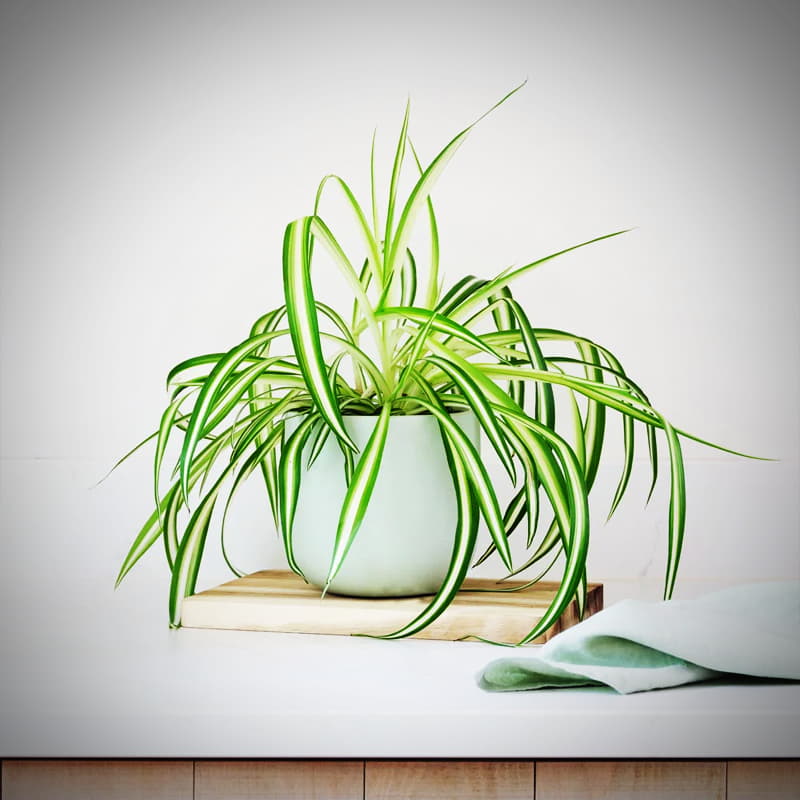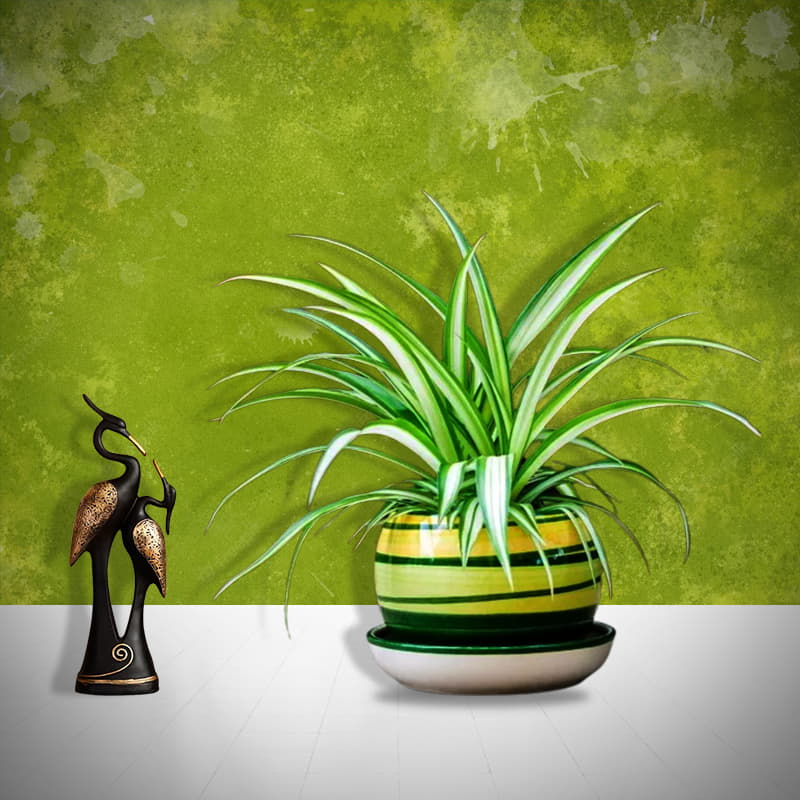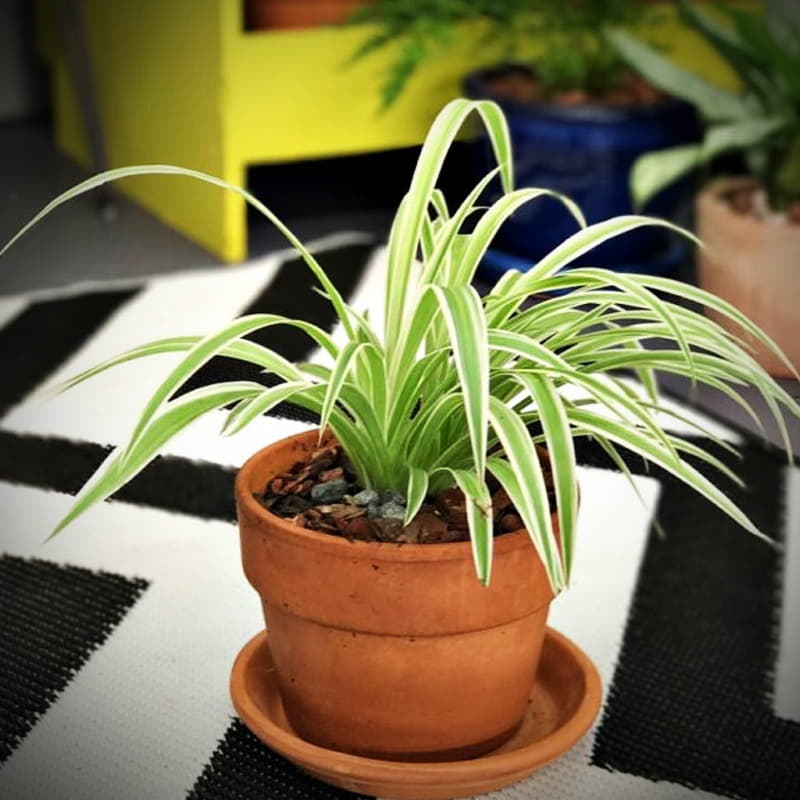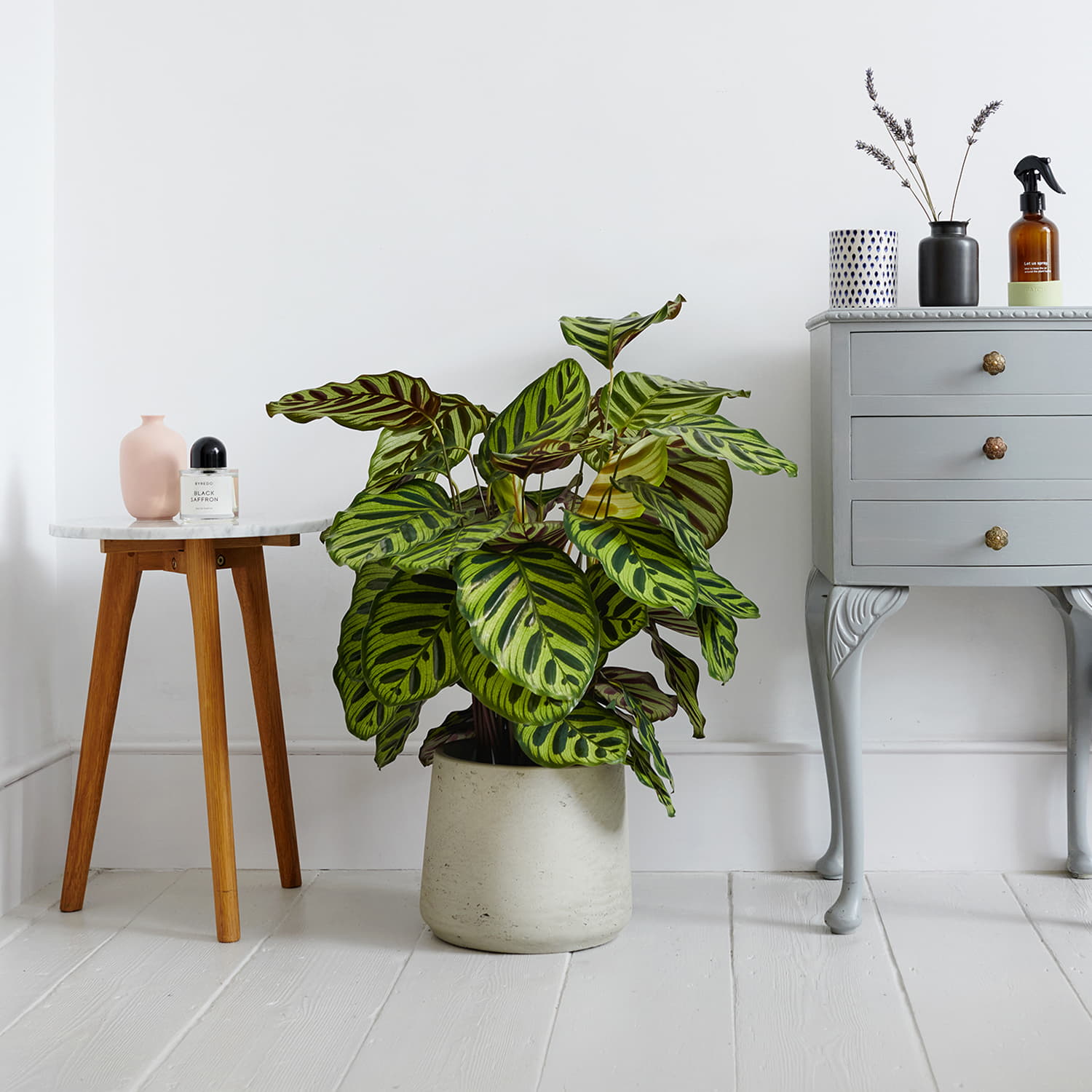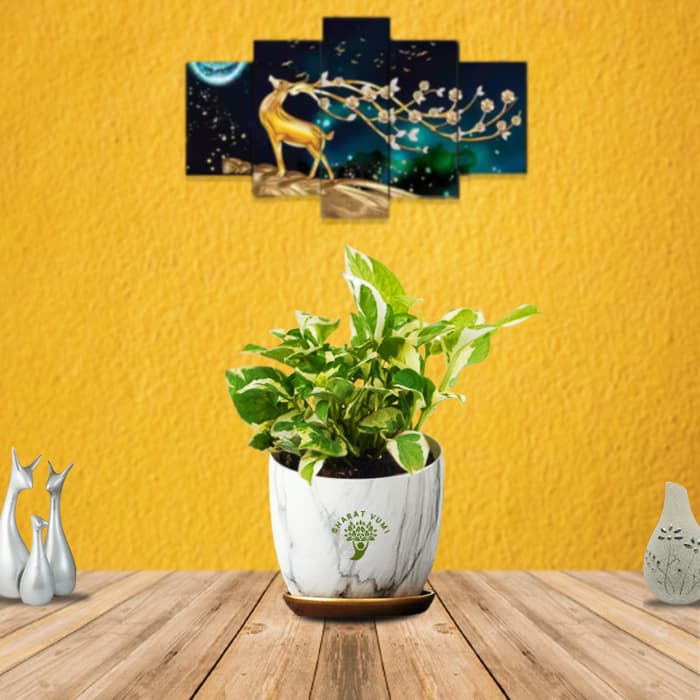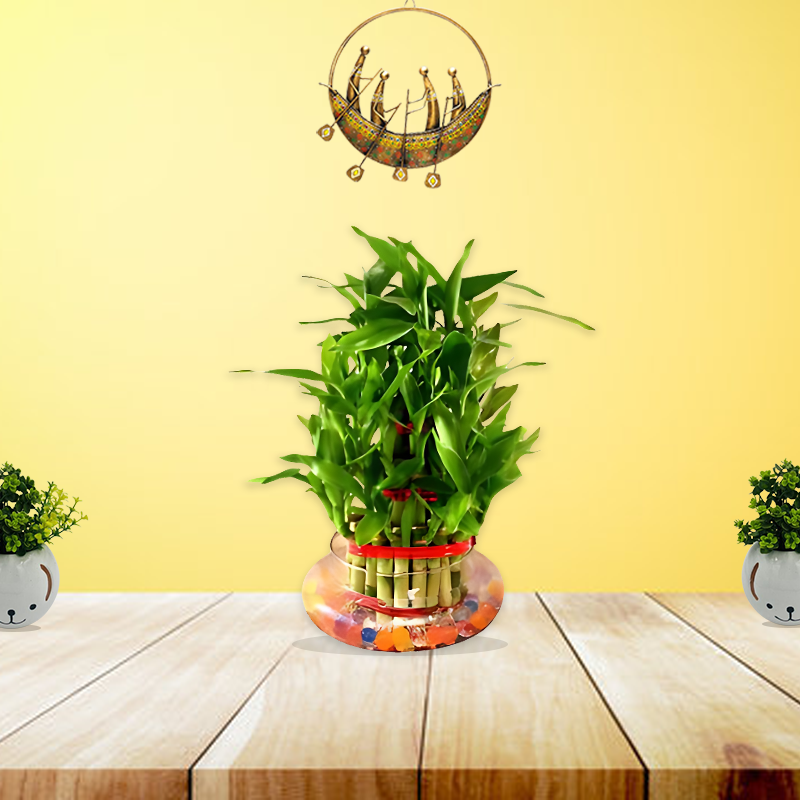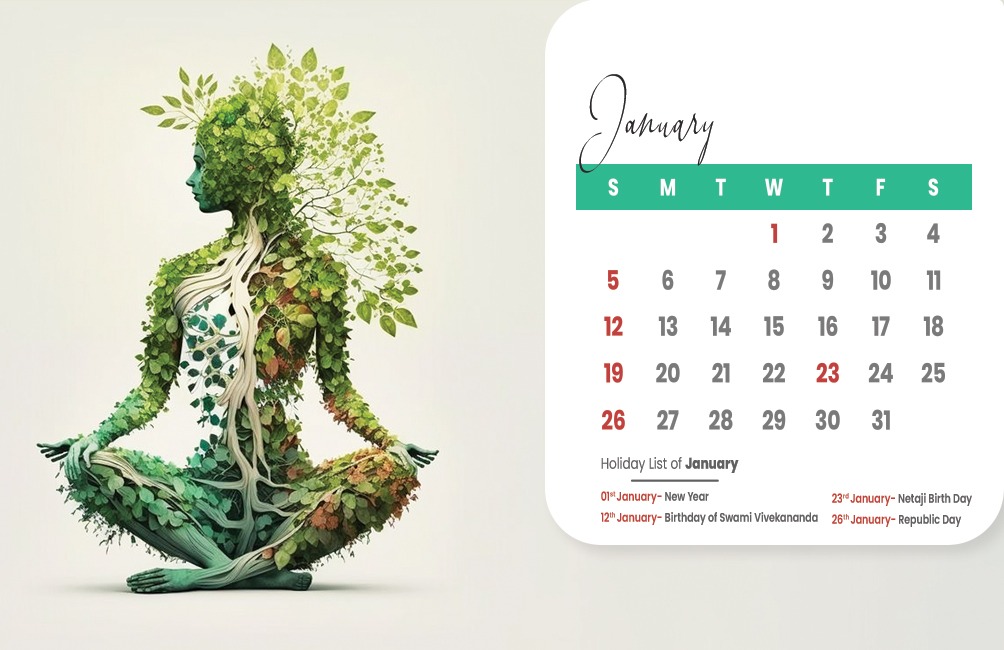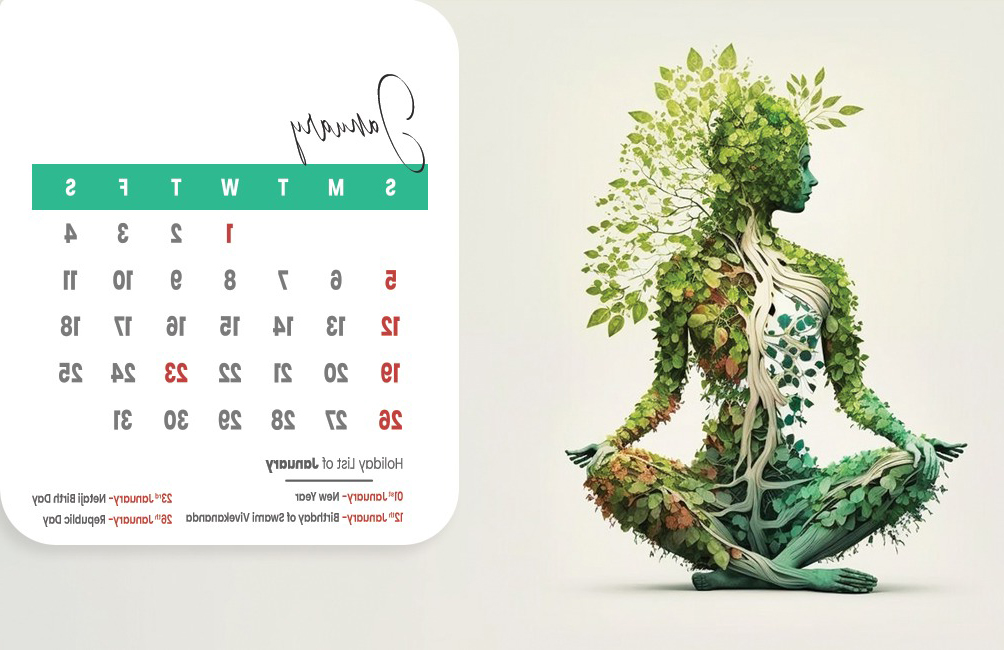Image(s) are for reference. Actual product might vary in some aspects like shape, size etc, from the one given in the image(s). However, we ensure what you get is close to the image(s) and of high quality. Our target is to deliver a healthy and well built plant. So relax after ordering and wait for an excellent delivery from Bharat Vumi that will bring smile on your face.
Plant Description:
Common Name- Spider plant
Scientific Name- Chlorophytum comosum
Family- Asparagaceae
Origin- South and West Africa
Spider plants are popular houseplants, known for their cascading foliage. This low maintenance plant is perfect for beginner as the plant can tolerate various light conditions and can thrive in drought conditions.
Benefits/Uses- Spider plants helps to clean and purify indoor air. This plant is also known for reducing stress and anxiety.
Growing Conditions-
1.Soil-
2.Watering- Spider plant likes moist soil but not waterlogged. Allow the top inch of soil to dry out before watering again. Spider plant can tolerate drought but avoid prolonged periods of drought or overwatering.
3.Temperature-
4.Humidity-Spider plants prefers average household humidity levels. However, they appreciate slightly higher humidity. Misting the leaves or place a tray with water near the plant to increase humidity.
5.Light requirements-
6.Fertilization-Fertilize the spider plants with a balanced, water-soluble fertilizer diluted to half strength every 2-4 weeks during the growing season (spring and summer). Reduce the frequency of fertilization during winter season.
7.Flowering- Spider plants produce small white flowers on long stalks, which can develop into plantlets. The main attraction of spider plants is their foliage rather than their flowers.
8.Important Diseases-
9.Important Pests-
10.Pruning- Prune to remove any yellow or brown leaves. Trim the plant to control its size and shape.
11.Propagation-
| Type |
Evergreen perennial herb |
|---|---|
| Benefits |
Helps to clean and purify indoor air. |
| Planting Time |
Anytime of the year |
| Soil |
A mix of peat moss, perlite, and/or vermiculite works well |
| Watering |
Water when the top inch of soil is dry. |
| Temperature |
18°C-27°C |
| Humidity |
Prefers slightly higher humidity. |
| Light requirement |
Prefers bright, indirect light but can tolerate lower light conditions. |
| Fertilization |
Apply balanced, water-soluble fertilizer in 2-4 weeks. |
| Flowering |
Produce small white flowers |
| Important diseases |
Root rot, Leaf spot |
| Important Pests |
Spider mites, mealy bugs |
| Pruning |
Prune to control shape and to remove yellow leaves. |
| Dormancy period |
Winter |
| Propagation |
Propagated through spideretts, division or by stem cuttings. |

